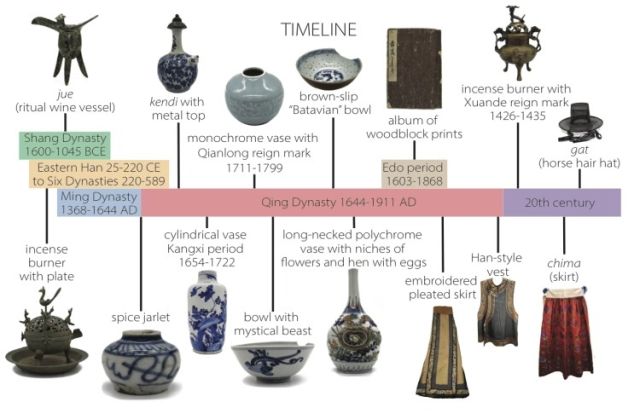Preview

Photo Credit
Laurel Lamb, Curator, University of Arkansas Museum
Object Date
Ming (1368-1644) or Qing dynasty (1644-1912)
Object Type
Blue-and-White Porcelain
Date
Spring 2020
Description
This Spice Jarlet is from the Ming or Qing dynasty in China, periods known for their prolific production of porcelain vessels, particularly those decorated with cobalt blue glaze. Ming porcelain was not reserved for the royalty and was quite affordable, due to the specialization in its production. Porcelain of all shapes and sizes were produced for a variety of uses. A vessel of this size is categorized as a jarlet and is about two and a half inches tall, easily held in the palm of a hand. It was likely used to hold spices. The neck of the jar is just wide enough to fit a pinky finger in, perfect for dipping into the shallow jar. Typically, cosmetic, medicine, or spice jars would have a cap.
The decoration on the jar was clearly done in haste and suggests that the artist used a quick hand. An abstract line design is painted on both sides of the globular body, but each side is slightly different. The serpentine line resembles the outline of an abstracted dragon, with its horns, wavy body, and long tail, a motif that highly common on Ming porcelain pieces for the royal court or for temples. Here, we see a small taste of that motif. Continuing around the neck of the jar is a floral petal-like design. This decoration is not precise either and appears to have been painted freely by the hand of the artist, as the petals vary in size and shape. The quickness of the decoration and the jar’s small size suggest that it was likely produced in a large batch of porcelain jarlets and also relatively affordable. These particular forms and designs were popular in the foreign market.
Object Dimensions
H. 3.81 cm
Object Housed
University of Arkansas Museum
Object Accession Number
0069-0887-0004


